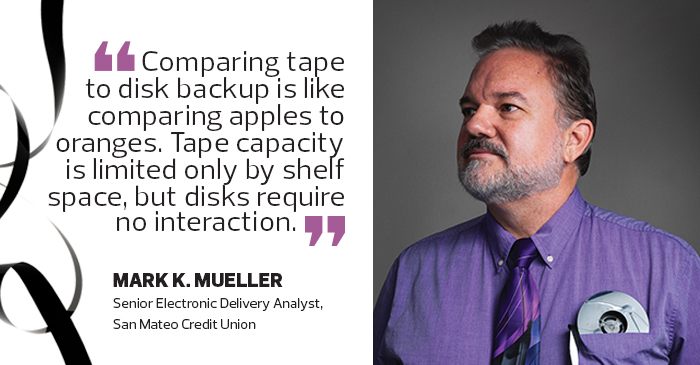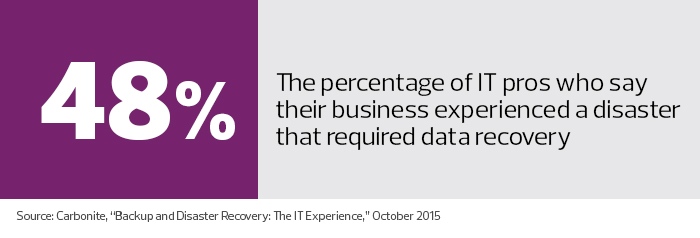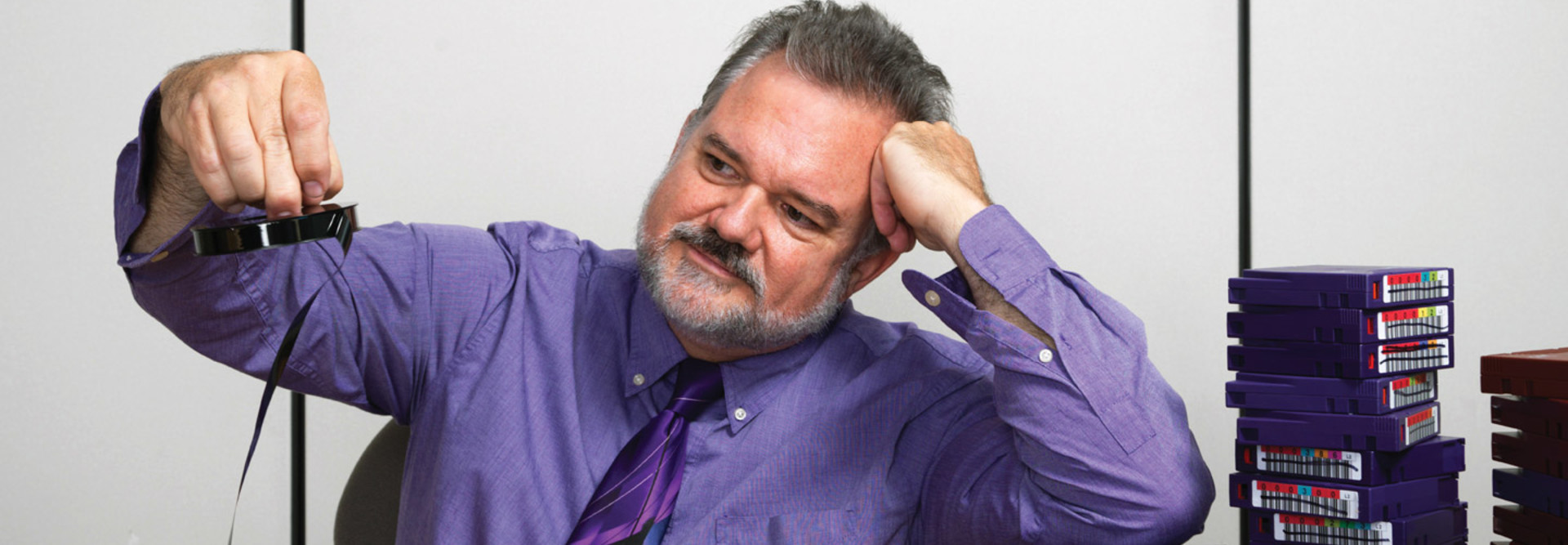Tape Versus Disk: What Should Back Up Your Biz?
Only 200 tapes held the 30 terabytes of data comprising San Mateo Credit Union’s entire business backup.
The Redwood City, Calif.-based credit union, which serves close to 75,000 customers and holds nearly $1 billion in assets, counted on those tapes if anything went wrong. Unfortunately, sometimes the tapes themselves sustained damage.
“I have had more than 50 tapes go bad over the last 10 years,” says Mark K. Mueller, SMCU’s senior electronic delivery analyst. “Some of the data was probably retrievable. But once the retention period was over, I’d end up just disposing of them.”
Looking to modernize, SMCU researched several solutions. “Cloud-based backup wasn’t an option,” Mueller says, “as we are required to maintain complete control over all of our data.” He also wanted a more simple solution to handle bare-metal restores.
His choice: a Unified Data Protection Appliance from Arcserve, which met those needs while also reducing complexity and boosting redundancy.
“Comparing tape to disk backup is like comparing apples to oranges,” he says. “Tape capacity is limited only by available shelf space, but disk backup requires no interaction.”
Businesses generally turn to one of three options to replace tape backup: Disaster Recovery as a Service (DRaaS); backup appliances; or backups on disk with data stored offsite in a private or public cloud.
This shift has been a trend for some time, particularly as businesses aim to reduce their IT footprint, says W. Curtis Preston, a lead analyst with research firm Storage Switzerland. “Tape is problematic, especially for small businesses, because they can’t stream it if there’s an outage and they need to do a restore,” he says. “And the smaller you are, the more costly it is for you to get your tapes and data offsite.”

Restoring Your Data Quickly If Something Goes Wrong
For Southern California skylight shade manufacturer Wilco Products, the ability to restore data quickly if something went wrong was part of the appeal of a new system, President Ted Bruce says.
“We’d put new systems in and forget to configure the backup. We had a system die and that caused me to lose part of our business operations,” says Bruce, who also handles the company’s IT and recently migrated to a cloud service. “The end result for us is that we know our backups are being handled appropriately, which is huge.”
It also gives him the ability to pull manufacturing templates out of archive more quickly for existing customers — a process that once took hours.
“If a customer calls and says, ‘I have a 20-year-old blind I want replaced,’ I can pull out that information without sorting through tapes,” Bruce explains. “It makes everyone more productive and keeps customers happier.”
San Mateo Credit Union also realized boosts in productivity by moving away from tape backups. Prior to adopting Arcserve, Mueller says tape management took him about 30 minutes, twice a week.
“I had to eject them out of the library, put them in jewel cases and put those cases into the storage box. Then they would be sent offsite,” he says.
Moving to Back Up Virtual Machines Efficiently
Easier, more streamlined management of backup and archiving increases efficiency because most new options comply not only with other hardware and software options but also with tape, says Steve Ricketts, senior analyst at Taneja Group.
“Newer backup offerings simplify things by creating a unified data management solution,” he says. “They can access and view all the data that’s ingested into the environment, whether on-premises or in a public or private cloud. You get one global view and can set policies across all storage assets.”
When Canada-based Golden West Broadcasting’s IT department sought a new backup solution, one criterion was critical. IT Coordinator Corey Unger says he wanted something that could handle backing up virtual machines (VMs), but that could simultaneously minimize the traffic coming and going from its facilities. The company operates 40 radio stations and 16 websites — many located in rural areas where connectivity isn’t always at top speed.

Golden West deployed Veeam Backup & Replication and now restores without having to reach out to “the one guy who had all the tapes,” Unger says. “It allows us to do a better job.”
Golden West also took advantage of an offline rotated-drives solution that includes USB drives, which boosts security and offers greater redundancy.
“With all the ransomware out there and the other security issues pointing to the need for a true offline backup, this gives us that,” he says.
The transition to the new technology has been simple. But, as Unger notes, the addition of VMs can introduce complexity: “You have a lot more boxes to check before you make the transition.”









